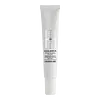What's inside
What's inside
 Key Ingredients
Key Ingredients

 Benefits
Benefits

 Concerns
Concerns

No concerns
 Ingredients Side-by-side
Ingredients Side-by-side

Octyldodecanol
EmollientPropylene Glycol Dicaprylate/Dicaprate
EmollientNeopentyl Glycol Diheptanoate
EmollientSqualane
EmollientCaprylic/Capric Triglyceride
MaskingDibutyl Lauroyl Glutamide
Skin ConditioningTetrahexyldecyl Ascorbate
AntioxidantDibutyl Ethylhexanoyl Glutamide
Skin ConditioningC12-15 Alkyl Benzoate
AntimicrobialTerminalia Ferdinandiana Seed Oil
AntioxidantHelianthus Annuus Seed Oil
EmollientPhenoxyethanol
PreservativeCitrus Paradisi Fruit Extract
Skin ConditioningEthylhexyl Palmitate
EmollientCitrus Aurantium Dulcis Peel Extract
Emulsion StabilisingOryza Sativa Bran Extract
Skin ConditioningTribehenin
EmollientMyrciaria Dubia Fruit Extract
Skin ConditioningSorbitan Isostearate
EmulsifyingTocopherol
AntioxidantHelianthus Annuus Extract
EmollientCurcuma Longa Root Oil
PerfumingJasminum Officinale Flower/Leaf Extract
MaskingRosmarinus Officinalis Leaf Extract
AntimicrobialLavandula Angustifolia Flower/Leaf/Stem Extract
MaskingEugenia Caryophyllus Flower Extract
AstringentVitis Vinifera Fruit Extract
Skin ConditioningPalmitoyl Tripeptide-1
Skin ConditioningCI 16035
Cosmetic ColorantCI 19140
Cosmetic ColorantOctyldodecanol, Propylene Glycol Dicaprylate/Dicaprate, Neopentyl Glycol Diheptanoate, Squalane, Caprylic/Capric Triglyceride, Dibutyl Lauroyl Glutamide, Tetrahexyldecyl Ascorbate, Dibutyl Ethylhexanoyl Glutamide, C12-15 Alkyl Benzoate, Terminalia Ferdinandiana Seed Oil, Helianthus Annuus Seed Oil, Phenoxyethanol, Citrus Paradisi Fruit Extract, Ethylhexyl Palmitate, Citrus Aurantium Dulcis Peel Extract, Oryza Sativa Bran Extract, Tribehenin, Myrciaria Dubia Fruit Extract, Sorbitan Isostearate, Tocopherol, Helianthus Annuus Extract, Curcuma Longa Root Oil, Jasminum Officinale Flower/Leaf Extract, Rosmarinus Officinalis Leaf Extract, Lavandula Angustifolia Flower/Leaf/Stem Extract, Eugenia Caryophyllus Flower Extract, Vitis Vinifera Fruit Extract, Palmitoyl Tripeptide-1, CI 16035, CI 19140
Alternatives
Ingredients Explained
These ingredients are found in both products.
Ingredients higher up in an ingredient list are typically present in a larger amount.
This ingredient is an emollient, solvent, and texture enhancer. It is considered a skin-softener by helping the skin prevent moisture loss.
It helps thicken a product's formula and makes it easier to spread by dissolving clumping compounds.
Caprylic Triglyceride is made by combining glycerin with coconut oil, forming a clear liquid.
While there is an assumption Caprylic Triglyceride can clog pores due to it being derived from coconut oil, there is no research supporting this.
Learn more about Caprylic/Capric TriglycerideHelianthus Annuus Seed Oil is the oil derived from the seeds of a Sunflower. Sunflower seed oil is non-fragrant. It is an emollient, meaning it helps to soften the skin.
Sunflower seed oil contains many fatty acids. The fatty acids found in sunflower seeds include (from highest amount to least): linoleic acid, myristic acid, palmitic acid, stearic acid, arachidic acid, oleic acid, and linolenic acid.
These fatty acids help the skin create ceramides. Ceramides play a role in repairing the skin barrier.
Helianthus Annuus Seed Oil helps moisturize the skin. This in turn helps the skin look more rejuvenated and smoother.
Sunflowers are rich in vitamin E.
Historians believe Indigenous cultures of North America domesticated sunflowers before corn. Thus they relied on sunflower oil for a variety of uses. One such use is moisturizing skin and hair.
Sunflower seed oil may not be fungal acne safe. We recommend speaking with a professional if you have any concerns.
Learn more about Helianthus Annuus Seed OilPhenoxyethanol is a preservative that has germicide, antimicrobial, and aromatic properties. Studies show that phenoxyethanol can prevent microbial growth. By itself, it has a scent that is similar to that of a rose.
It's often used in formulations along with Caprylyl Glycol to preserve the shelf life of products.
Tocopherol (also known as Vitamin E) is a common antioxidant used to help protect the skin from free-radicals and strengthen the skin barrier. It's also fat soluble - this means our skin is great at absorbing it.
Vitamin E also helps keep your natural skin lipids healthy. Your lipid skin barrier naturally consists of lipids, ceramides, and fatty acids. Vitamin E offers extra protection for your skin’s lipid barrier, keeping your skin healthy and nourished.
Another benefit is a bit of UV protection. Vitamin E helps reduce the damage caused by UVB rays. (It should not replace your sunscreen). Combining it with Vitamin C can decrease sunburned cells and hyperpigmentation after UV exposure.
You might have noticed Vitamin E + C often paired together. This is because it is great at stabilizing Vitamin C. Using the two together helps increase the effectiveness of both ingredients.
There are often claims that Vitamin E can reduce/prevent scarring, but these claims haven't been confirmed by scientific research.
Learn more about Tocopherol